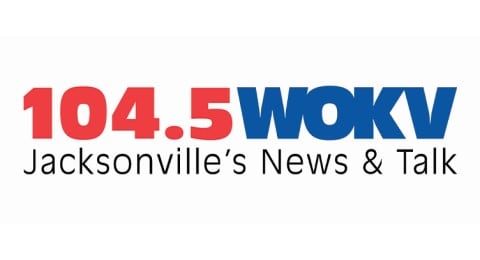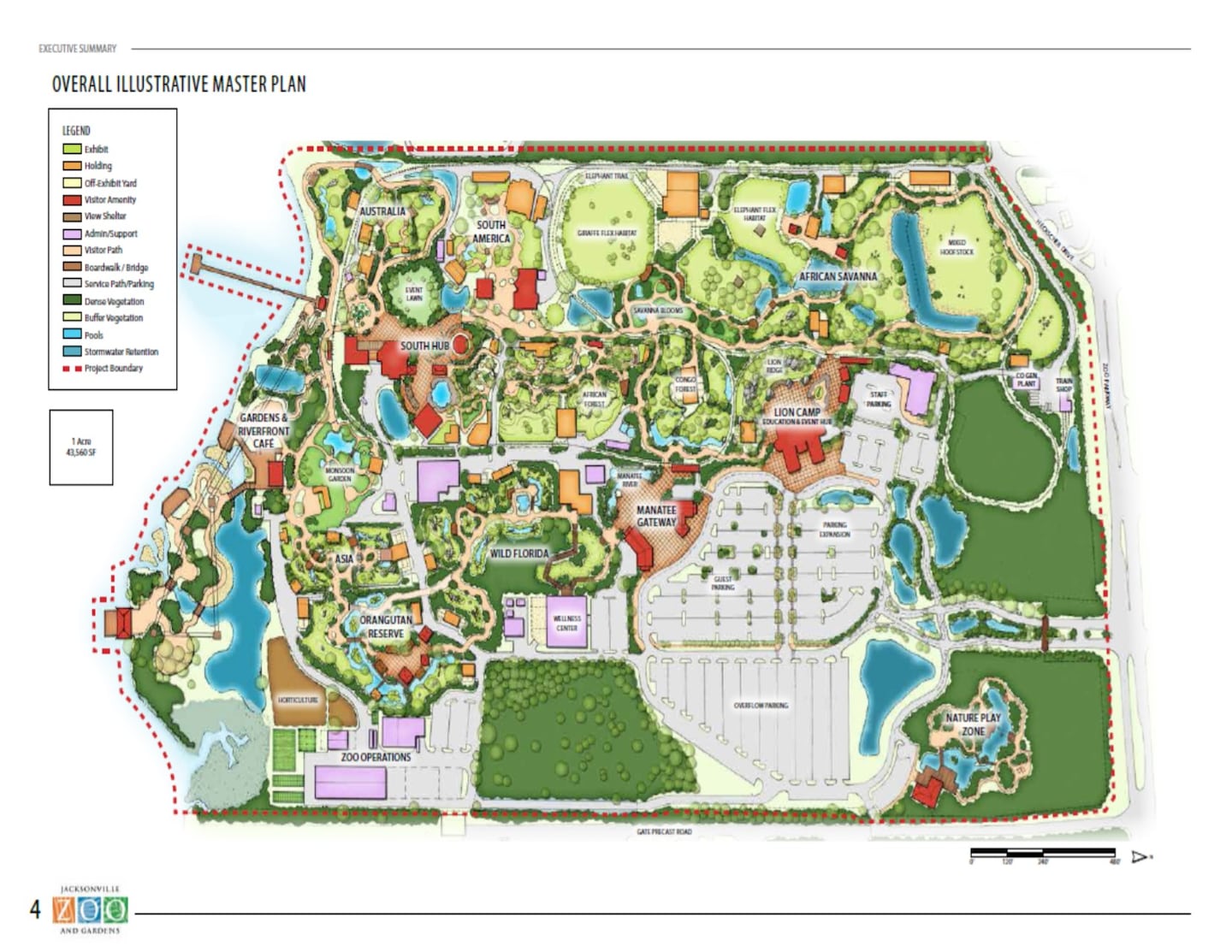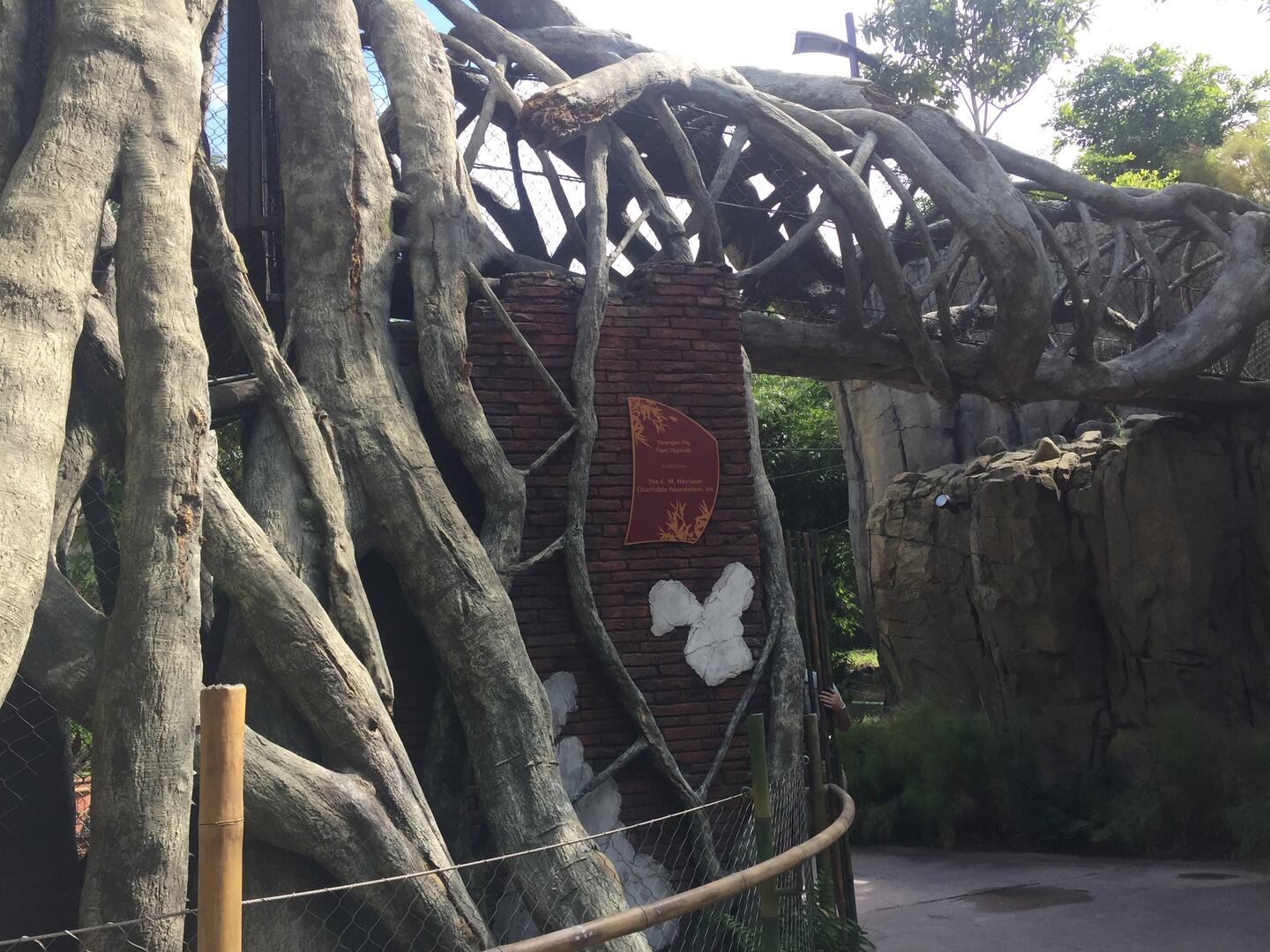Jacksonville, FL — The Jacksonville Zoo and Gardens of the future is poised to be better for animals, visitors, and business overall, but it hinges on City funding to carry out the full vision.
WOKV previously told you Jacksonville Mayor Lenny Curry's proposed Capital Improvements Program includes $25 million in City borrowing over the next five years, to be matched by the Zoo with private funds. As the City Council Finance Committee prepares to explore that funding pitch, we've learned the $50 million total would go toward implementing the Zoo's new Master Plan- which could take ten years or more- but would create a true destination, and model for the industry.
“This will be a Zoo that just can’t be ignored. There won’t be a way to not recognize that this is one of the best zoos in the country, in what I think is one of the best communities in the country,” says JZG Executive Director Tony Vecchio.
Master Plan development
Vecchio says the Master Plan was completed about six months ago, around eight months of development. It reflects the growth they’ve seen in visitors, as well as the continued evolution in zoo culture overall.
Over the last ten years, Vecchio says the Zoo has doubled its visitor count, which now reaches about one million people each year. He says the Zoo was not designed for that type of capacity, and they’re expecting the growth to continue, so a big part of this plan is expanding the Zoo’s footprint, but within the area they already have. The Zoo property is more than 120 acres, with only 90 developed. This new plan would develop all but a few acres of their existing site.
The new exhibits would reflect an evolving culture around what Vecchio calls “wellness inspired design”. He says zoos started to get a better understanding of the physical and health needs of animals in the 1970s and 1980s, including their diets, the space they need, and more. In the 1990s and ever since, he says the focus has been on the mental wellbeing of an animal- providing enrichment and mental stimulation. Now, he says they’re looking at the emotional health, including how to make sure an animal really thrives in the zoo setting.
“The better we make the Zoo for animals, the better it is for our visitors, and that’s just good for business,” he says.
The Zoo doesn’t yet have a price tag for the entire development, because they’re still lining up the funding, but Vecchio says they believe it would exceed the proposed $50 million partnership with the City. The proposal is $5 million each of the next five years from the City, which the Zoo would have to match in private dollars annually.
The City only makes up about 5% of the Zoo’s operating budget, according to Vecchio, but this capital investment has the potential to create more revenue for them in the future.
“They’re investing in us in a way that will allow us to grow our capacity to generate more revenue. So, if we have a bigger, better Zoo, more people will come, we can make more money that will pay for our operations,” he says.
Without the City dollars, he says this plan will not happen.
“We can do something, because we have a lot of donors who love the Zoo and have supported us. We just built the African Forest exhibit we’ll be opening in the next couple of weeks. So we can continue to do things… not at this scale. This is a big- this is the next generation of our Zoo. This is the next big thing. And it will take the City and the community coming together to make this happen,” he says.
He says the public-private partnership the Zoo has with the City is a model for the industry, and they want to ensure that stays strong.
Traffic, parking, and Zoo entry
A big focus in enhancing your experience would happen even before you make it through the front entrance.
Vecchio says the traffic flow and parking on the Zoo property has been problematic. In fact, he says there are about 25 days each year that the parking lots reach capacity, and people wind up parking along Zoo Parkway, which could be dangerous.
The Master Plan addresses this in its first phase, including expanding Zoo parking to more than one thousand spaces.
When you’re ready to get in to the Zoo, you’ll find a new entrance, under the Master Plan. The entrance would essentially switch with where the education center is currently, which puts it in a more central location. Currently, the only way to explore the Zoo is to walk down a long path toward the end, detouring for exhibits along the way, and then coming back down that same path. Under the Master Plan, you would choose at the entrance whether you want to do the North Loop or the South Loop- or both.
Part of the Jacksonville Zoo and Gardens Master Plan is moving the entrance to a more central location, and adding a feature entrance exhibit- manatees! pic.twitter.com/VwLAl0KiVU
— Stephanie Brown (@SBrownReports) August 2, 2018
For families who only want to spend an hour or two at the Zoo, or who visit frequently- like the more than 20,000 Zoo members- this would mean the option to do one loop one day, and the other during their next visit, where the current design doesn’t have any clear way to avoid a full-day experience.
The new entrance would also feature a restaurant, to expand on the food options currently offered by the small snack bar there now. A Zoo shop would remain at the entrance as well.
Exhibits
The Zoo entrance right now lacks a “first impression exhibit”- something that greets you right when you walk in. The Master Plan would change that in a big way.
The new entrance is proposed to have a manatee exhibit, which would include below-water viewing.
“That’s a species that says Florida better than anything else, and it also highlights our conservation and animal wellness mission as well,” Vecchio says.
The Zoo currently has a Manatee Critical Care Center that takes in and rehabilitates injured manatees, but there are no consistent viewing opportunities with that for the public. This new exhibit could bring visitors a unique look at the animal, while also teaching about what they do at the Zoo and efforts to conserve manatees.
Aside from that, Vecchio says- of all the exhibits- they really want to be able to hang their hat on one key area.
“We want to be the Zoo that’s known for great cat exhibits- the big cats,” he says.
When they debuted the “Range of the Jaguar”, it was nationally acclaimed. The same happened with the “Land of the Tiger”. Next up are the lions, which would get a completely new exhibit under the Master Plan. Like the other big cats, this exhibit would be “wellness inspired”, by providing the lions more opportunities to stretch, explore, and interact with their food and keepers in different ways.
The upgraded lion exhibit could also help bolster one of the Zoo’s revenue-generating areas- catering and event space. Currently, the Zoo’s event space does not have any special or unique view, but the Master Plan would have it directly overlooking the lion exhibit.
JZG Master Plan includes new wellness-focused lion exhibit that’s next to their catering center. Event space will overlook the exhibit. pic.twitter.com/6wBqYsWKTV
— Stephanie Brown (@SBrownReports) August 2, 2018
“Wild Florida” would see a complete overhaul. Vecchio says this is one area in the Zoo right now that the staff had to piece together, so it suffices, but does not really showcase the animals. That would change, under the Master Plan.
Some of the other exhibit space would test new ways to showcase the animals, by being built to accommodate different species. In the African Savanna area, Vecchio says they hope to build flex exhibit space that can sometimes show elephants and sometimes show giraffes. Not only does this lean in to the “wellness inspired design” by providing the animals fresh and changing exhibit spaces to explore, but it provides people a different experience visit-to-visit- and sometimes even hour-to-hour- because the keepers can rotate the animals through different exhibit spaces.
While those changes largely deal with the animals the Zoo already has, there is also an expansion planned for the Asia area, including creating a new Orangutan Reserve- which is an animal the Zoo does not currently have. They may also bring in other large mammals for that expanded area, with interest especially high on a species of bear.
The new African Forest exhibit is poised to open at the end of this month. This project serves as a transition, of sorts, between the Zoo’s last Master Plan and the new one that’s poised to begin, because it also features the wellness focus and enrichment opportunities for the animals. The gorillas have been out of sight for about a year, as part of the Great Apes area closure to get this project done, but Vecchio thinks visitors will be thrilled when they see the results.
In all, Vecchio says they’re proposing overhauling, upgrading, or moving- or a combination- about half of their exhibits.
Education
The Zoo serves 100,000 school kids every year through field trips, camps, and other program, according to Vecchio. They want that to continue growing.
The education campus would essentially swap its location with where the main entrance is now. They’re also looking to add a “Nature Play Zone” on the property, but outside of the main gate, as a supplement to the education programs.
The Zone would give urban youth an opportunity to connect with nature, according to Vecchio. It would feature treehouses, a rock climb, canoeing, kayaking, repelling, and more. The area where the Zone would be constructed is currently woods, and they would keep that natural feel.
Vecchio says their at-risk youth program specifically seizes on opportunities like this Zone, but also continues to thrive in the rest of the Zoo setting. They give these kids environmental education, including handling program animals, in an effort to spark an interest and passion. Vecchio says many of the youth then become mentors and educators themselves, not only in the programs, but also in their own communities. He believes it’s important to have that multi-generation cycle in place, so that at-risk youth can see people who were in their situations, thriving on a different path.
The Jacksonville Zoo and Gardens is poised to get $25 million in capital funding to carry out their new Master Plan. I’m taking a closer look:
Posted by Stephanie Brown, News 104.5 WOKV on Thursday, August 2, 2018
Other attractions
With the new two-loop design, Vecchio says they decided each loop should have a feature.
The North Loop would feature a reconfigured train route. The Zoo took the feedback they were getting from visitors who felt parts of the train ride weren’t really showcasing the exhibits. The new, smaller loop would be more interactive with the exhibits and have a tunnel feature. The train itself is also slated for upgrades.
They haven’t yet landed on what the South Loop’s attraction may be, but two of the options most talked about include a zip line or a Ferris wheel.
The train will remain a paid feature and the South Loop exhibit would be as well. Some specialized areas and attractions would also require an additional fee, but Vecchio says they’ve otherwise listened to other visitor feedback and plan to keep the stingray exhibit free.
The Master Plan also includes up to half a dozen “pocket gardens” added along the River in the South Loop, to truly showcase the “Gardens” element of the Jacksonville Zoo and Gardens. Vecchio says they landed on putting more garden space there, because if there is flooding from the River, that would have a less substantial impact on the gardens than on an exhibit- so they felt it was the wisest use of the area.
That rework would also see an art gallery and café added. Vecchio says they’ve made a push to promote arts and culture, so this would give them space to showcase specifically wildlife-driven art, including many local artists, in a rotating exhibit space.
Also in that area, Vecchio says they are looking to increase interactivity and educational experiences dealing with the St. Johns River. He says that’s an untapped resource for them right now, but a unique one that the Zoo should be doing more with, and among the plans is a “living shoreline” involving visible shoreline restoration.
Another new feature would be a veterinary hospital that will be open to the public to see. Vecchio says this is yet another educational experience that was untapped, so they are now looking at how to maximize the exposure of what they do at the Zoo every day.
Next steps
The big priority right now for the Zoo is making their case to the City Council for why this proposed funding should be approved.
“They’re not taking a chance, they’re making an investment,” he says.
The Finance Committee will hear from the Zoo in the coming weeks, and will approve the final City budget and Capital Improvements Program before the start of the next fiscal year October 1st.
If the Council signs on, then Vecchio says they get to work on fundraising the private funding to match the public dollars.
“This is great for the City to really step in and support the Zoo at a major level. I think they’re doing it in a very smart way, in that it’s a match. So the money is there, if the community shows that they want the money to be there,” he says.
They’ve had several recent successful fundraising campaigns, and Vecchio is confident they can do it again, because the donors understand the impact the Zoo has not only now, but in the future.
“We will not just be a community Zoo, we will be a regional attraction,” he says.
It’s too early to say if the Zoo would seek additional support past the five-year City pledge, with Vecchio expecting full implementation of the Master Plan to take around ten years, or longer.
WOKV continues to work through the budget and CIP proposed by Jacksonville Mayor Lenny Curry. Stay with us as we learn more from those spending plans.












